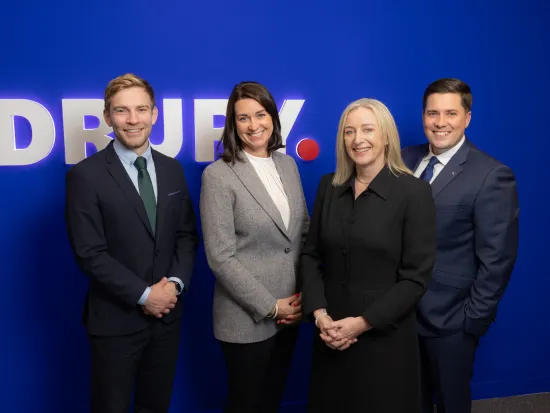Presidential Election 2025, a ‘Referendum’ on Government Performance or a Barometer on a ‘United Left’
As Catherine Connonlly and Heather Humphreys prepare for the final Presidential Election debate on RTÉ this evening, it is fair to say that the contest to select Ireland’s 10th Uachtarán na hÉireann has outperformed initial expectations.
From the outset, it was widely predicted that this election would see a slow start turn into a boring and uninspiring set of campaigns, as none of the political parties seemed capable of capturing the attention of the public.
If there was a perceived lack of enthusiasm amongst the political classes, the initial interest from the electorate was nearly non-existent, something that was unsurprising as they were subjected to a slew of elections and referenda throughout 2024.
However, despite starting as a slow campaign, the Race for the Áras 2025 picked-up speed as the runners and riders were announced, substituted, and resigned!
Humphreys Challenges
The latest polling figures indicate that Catherine Connolly is now the clear favourite to win Friday’s election with 60% of the vote – undecided voters, voting abstainers and those intending to spoil their vote excluded. This level of support for the Galway West TD would indicate somewhat of a ‘protest vote’ as the public views this election as an opportunity to send a clear message to the Government - they are not happy! As disapproval of Government performance is helping to bolster the Connolly campaign, the same public opinion is acting as a headwind directed at Heather Humphreys. Other challenges mounted towards the Humphreys’ campaign include her late entry into the race, a requirement to defend 14 years of Fine Gael in Government, Budget 2026, and the ‘advice’ of Ivan Yates.
Budget 2026 was announced exactly two weeks ago, and since then, the Government has suffered sustained criticism from all sides. Some businesses feel that the Budget does not do enough to support them in an environment of ‘soaring’ costs in energy, labour, and materials. On the other hand, the electorate view Budget 2026 as too ‘pro-business’ and have expressed their unhappiness with the lack of ‘cost-of-living’ measures to support them as they face a winter of high-energy costs, rising grocery prices, and increased tax bills. The Government - and therefore Heather Humphreys - may soon find out that the fiscal pragmaticism they exhibited by investing in vitally important, but distant, infrastructure projects rather than immediate one-off cost-of-living or personal taxation measures is electorally unpopular. Pragmatism rarely wins elections, especially one as dominated by culture and idealism as the Irish Presidential Election, however, the pragmatism of Budget 2026 may well pay-off for the Government in the longer term. The next General Election is scheduled for 2029, but it has not helped the Humphreys’ campaign.
Connolly’s Strengths
The anti-government mood growing across the electorate will only be part of Catherine Connolly’s (likely) success - political campaigns are rarely won on negative feeling towards one side alone. Instead, the Connolly campaign has got a lot right; a well-coordinated ground game, a strong command of digital media, appealing branding and merchandise, youth mobilisation, and the successful collaboration between all left-wing political groups in Dáil Éireann - the likes of which we have not seen since the hugely successful Together for Yes and Yes Equality campaigns (albeit with notable help from some centrists in FG and FF). Similarly to these two referenda, turnout on Friday will be key, with a higher turnout likely to result in a more comfortable result - and weekend - for Catherine Connolly and her supporters.
The Catherine Connolly for President campaign has also seen elected representatives and party members across PBP-Solidarity, the Social Democrats, the Labour Party, Sinn Féin, the Green Party, and independent political groups, put aside long-standing conflicts - for the most part - and work together at every level of the campaign machine.
The ’United Left’
This newfound collaborative approach between the left and centre-left parties in the Dáil was treated to an early reward over the weekend as the latest Ipsos B&A and Irish Times polling data found that collectively these parties received 43% support. In the same poll Fine Gael and Fianna Fáil collectively secured 35% support – the joint lowest ever combined support for the two parties. However, it is important to remember that we have seen similar polling trends before, and that we are 4.5 years away from a General Election - which is driven largely by economic factors and longstanding party affiliations.
Looking ahead, the parties of the Left may find their newfound unity difficult to maintain, and only time will tell if this new cross-party movement can be replicated and successfully implemented in the ‘realpolitik’ of the 2029 Local and General Elections. The possible by-election in the Galway West constituency will be an interesting litmus test for left unity in the face of a vacant Dáil seat – perhaps we will see a more coordinated and inclusive ‘Vote Left Transfer Left’ approach, compared to the 2020 General Election, as newfound bedfellows try to juggle left unity with the prospect of an additional Dáil seat. However, as everyone knows, by-elections are a law unto themselves, and this should not be seen as the first real test for Ireland’s new ‘United Left.’
By Saturday night we will know the next President of Ireland. It will be far longer before we know if the Government will regain the majority support of the electorate, or if the United Left can hold until 2029.
Ronan Lowther, Client Manager, Public Affairs






